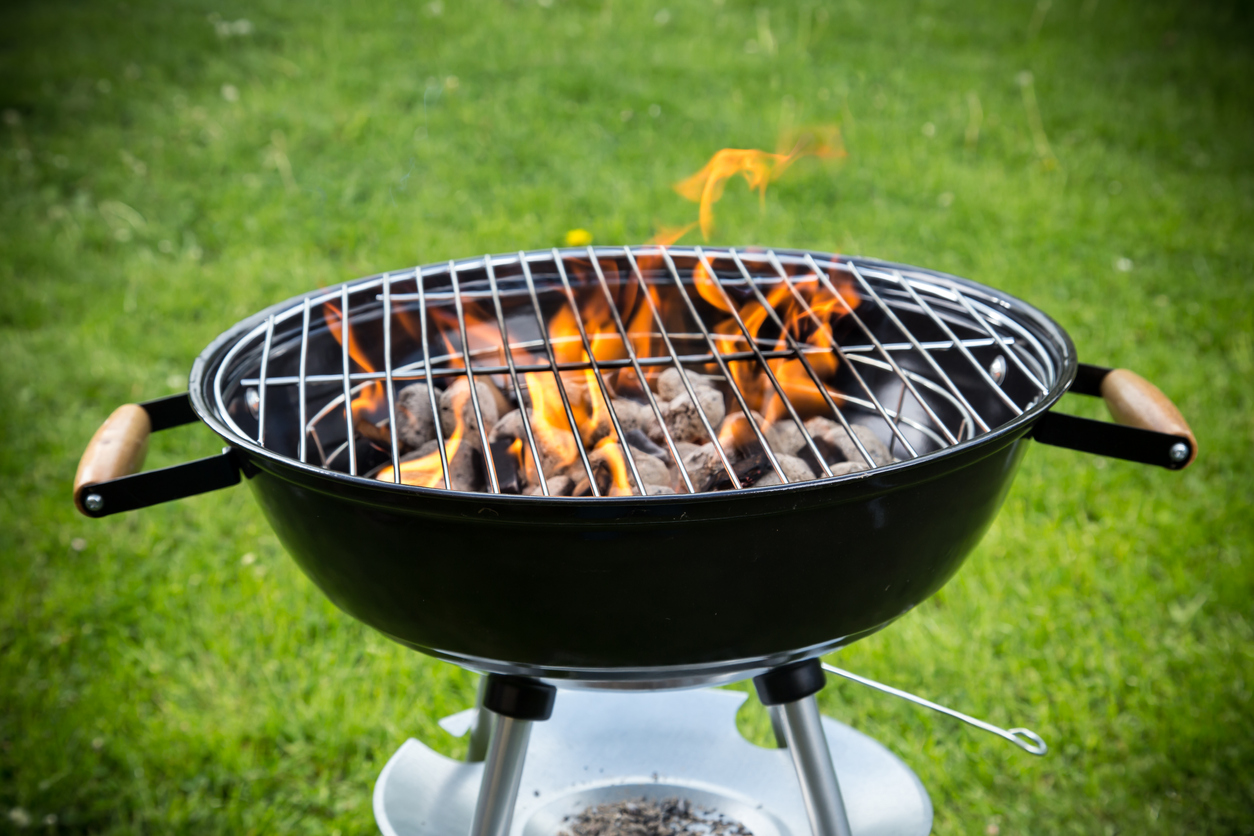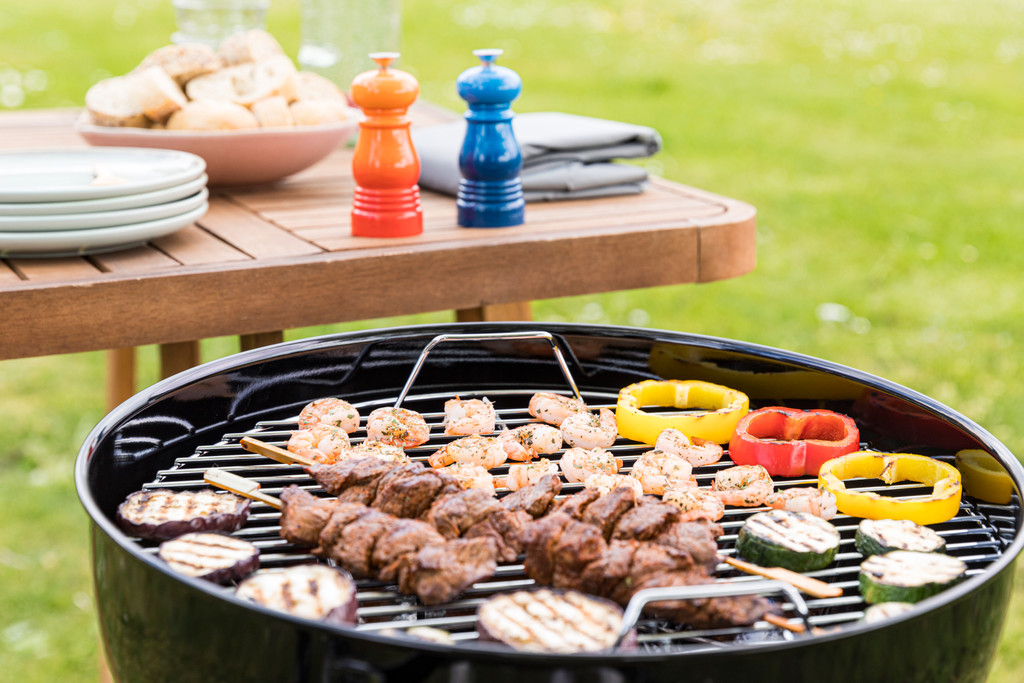How Do You Cook Meat on a Charcoal Grill? Master the Art with These Steps!
Written By James Morgan
Cooking meat on a charcoal grill is an age-old tradition that blends the smokiness of charcoal with the delicious flavors of meat. If you've ever wondered, 'how do you cook meat on a charcoal grill?', this detailed guide will walk you through the entire process. Whether you're a novice or a seasoned barbecue enthusiast, mastering the techniques and understanding the nuances can elevate your outdoor cooking game significantly.

The Fundamentals of Charcoal Grilling
Before diving into the actual process of grilling meat, it's essential to understand the basics of using a charcoal grill. Charcoal grilling is different from gas grilling or using an electric grill. The flavors are more distinct, and the process itself is a ritual that many find both soothing and satisfying.
Choosing the Right Charcoal
There are primarily two types of charcoal: briquettes and lump charcoal. Briquettes are more uniform in shape and size, making them easier to stack and manage. They also burn longer and more consistently. Lump charcoal, on the other hand, lights up faster and burns hotter. It also produces less ash, and many argue that it provides a more natural smoky flavor. So, the first step in how to cook meat on a charcoal grill is choosing the right type of charcoal for your needs. For a consistent cook, briquettes are your best bet. However, for a hotter and cleaner cook, go for lump charcoal.
Getting Your Grill Ready
Start by cleaning your grill thoroughly. Residue from previous grilling sessions can affect the taste of your meat. Scrub the grates clean and make sure the ash from earlier use is completely emptied. Here's a barrel charcoal grill cleaner that can help you with the task.

Selecting the Right Meat
The quality of the meat you choose can make a significant difference in your grilling results. Whether you prefer beef, chicken, pork, or lamb, high-quality, fresh meat is a must. Opt for well-marbled cuts if you're cooking beef or pork since the extra fat renders out, adding flavor and moisture to the meat.
Beef
For beef, some of the best cuts to grill include ribeye, filet mignon, and sirloin. Each of these cuts has its unique flavor profile and texture. Ribeye is well-marbled and juicy, whereas filet mignon is tender but lean. Sirloin offers a balance of tenderness and flavor, making it an all-around great choice for grilling.
Poultry
Chicken and turkey are also great options for the grill. For chicken, thighs and legs are more forgiving and flavorful compared to breast meat, which can dry out. If you prefer a whole bird, ensure it's adequately spatchcocked to promote even cooking.
Pork
Pork chops, tenderloins, and shoulders are excellent choices for charcoal grilling. Each cut offers different textures and flavors, but all can benefit from a good marinade or brine to enhance their taste further.
Lamb
Lamb chops or a rack of lamb are ideal for grilling. The unique flavors of lamb pair well with robust marinades and rubs, making it an exciting option for those looking to try something different.

Marinades, Rubs, and Seasonings
Once you've selected your meat, the next step is marinating or seasoning it. Marinades not only impart flavor but also help tenderize the meat. Similarly, rubs can add a crusty exterior and layers of flavor.
Essential Marinade Ingredients
An effective marinade should include key components: an acid (like lemon juice or vinegar) for tenderizing, fat (such as olive oil) for moisture, and seasonings for flavor. Mix these in a good ratio to ensure your meat soaks up all the deliciousness.
Rubs
Rubs are a fantastic way to add flavor to the meat's surface. A simple rub can include salt, pepper, garlic powder, onion powder, paprika, and brown sugar. Massage the rub into the meat thoroughly to ensure even coverage.

Lighting the Grill
Now comes the crucial part of lighting the grill. There are various methods to start a charcoal fire, but using a chimney starter is one of the most reliable. Place your charcoal in the chimney starter and stuff crumpled newspaper or a charcoal starter underneath. Light the newspaper and let the chimney do the work. In about 20-30 minutes, your charcoal should be ashy and ready to dump into the grill.
Arranging the Coals
How you arrange the coals in your charcoal grill significantly impacts the cooking process. For direct heat (ideal for searing and cooking smaller cuts of meat), spread the coals evenly across the grill's base. For indirect heat (best for larger cuts like ribs or a whole chicken), pile the coals on one side, creating a two-zone cooking area. This setup allows you to sear the meat over direct heat and then finish cooking it slowly over indirect heat.
Grilling Techniques
Mastering different grilling techniques will help you achieve the perfect BBQ meat every time. Here are some techniques to consider:
Searing
Searing meat is about exposing it to very high heat to create a caramelized crust. For the best sear, use the direct heat zone and place your meat on the grill. Do not move it for a few minutes to allow a crust to form. Then, flip and repeat on the other side.
Indirect Cooking
Indirect cooking involves placing the meat away from the heat source, allowing it to cook slowly and evenly. This method is perfect for larger cuts of meat that require longer cooking times, like roasts or whole chickens.
Controlling Flare-Ups
Flare-ups occur when fat drips onto the coals and ignites. While small flare-ups can add a nice char flavor, larger ones can burn your meat. To control flare-ups, keep a spray bottle of water nearby and use it to douse any large flames.
Using a Meat Thermometer
A meat thermometer is essential for ensuring your meat is cooked to the perfect temperature. Insert it into the thickest part of the meat without touching any bone. For beef, aim for 125F (medium-rare) to 160F (well-done). Poultry should reach 165F, and pork should be cooked to 145F (medium-rare) to 160F (well-done).
Resting Your Meat
After your meat is cooked to the desired temperature, it's vital to let it rest. Resting allows the juices to redistribute throughout the meat, making it juicier and more flavorful. Tent your meat with aluminum foil and let it sit for at least 10-15 minutes before slicing.
Serving and Enjoying Your BBQ
Serving your meat alongside delicious side dishes can make your barbecue experience even more enjoyable. Consider classic sides like coleslaw, baked beans, and cornbread. For beverages, iced tea, lemonade, or a cold beer can make your meal complete.
Cleaning Up
After all the grilling fun, it's time to clean up. Make sure to scrape off any residue from the grill grates and dispose of the ashes safely once they've cooled. Regular maintenance of your grill will ensure it lasts longer and performs better each time you use it. Check out this stainless steel cleaner and cutting board conditioner to keep your tools in top shape.
Conclusion
Learning how to cook meat on a charcoal grill can be incredibly rewarding. With the right preparation, techniques, and a bit of patience, you can master the art of grilling and impress your family and friends with your BBQ skills. Don't forget to check out our grilling tools to equip yourself with the best gear for your next barbecue session. Enjoy the process, and happy grilling!
As an Amazon Associate, I earn from qualifying purchases.



